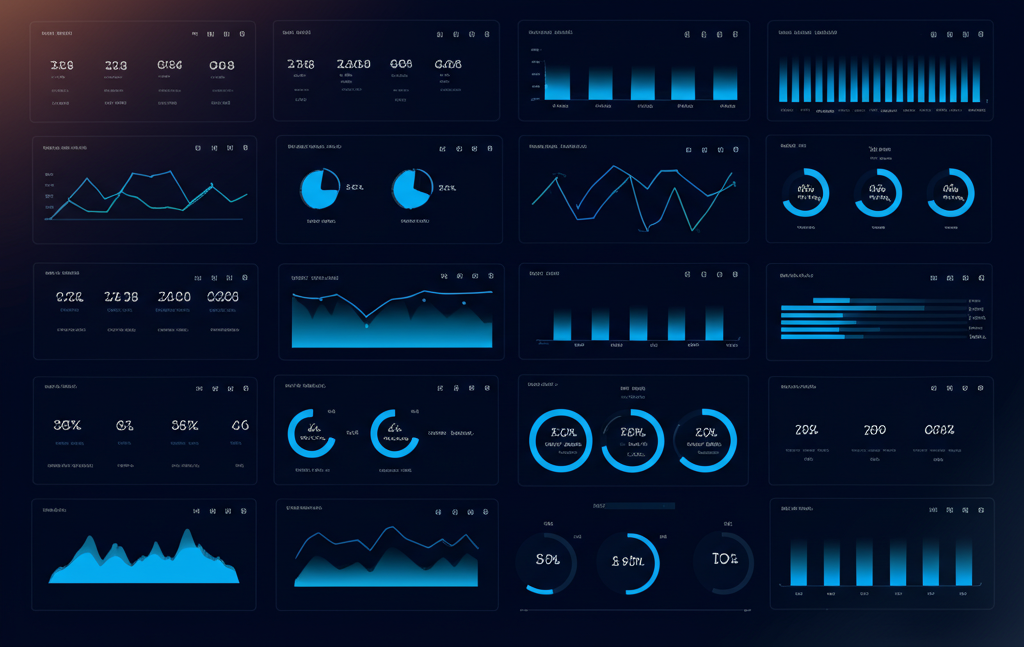Compare DAX and SQL for financial analysis and discover which approach works best for different reporting scenarios in modern BI tools.

In the world of financial analysis and business intelligence, two powerful query languages dominate the landscape: DAX (Data Analysis Expressions) and SQL (Structured Query Language). While both serve the purpose of extracting insights from data, they approach financial analysis from fundamentally different perspectives. Understanding when and how to use each can dramatically improve your reporting efficiency and analytical capabilities.
SQL has been the backbone of database management for over four decades. It's a declarative language designed to manage and query relational databases. In financial analysis, SQL excels at data extraction, transformation, and aggregation across large datasets.
DAX is a formula language developed by Microsoft specifically for Power BI, Analysis Services, and Power Pivot. Unlike SQL's row-based approach, DAX operates on columns and tables, making it particularly well-suited for analytical calculations and business intelligence scenarios.
When it comes to raw data processing speed, SQL generally outperforms DAX, especially for large-scale data transformations and initial data preparation. SQL's set-based operations are highly optimised for bulk data processing.
However, DAX shines in analytical scenarios where complex calculations need to be performed across different contexts and time periods. The columnar storage engine underlying DAX (VertiPaq) provides excellent compression and query performance for analytical workloads.
DAX models are loaded entirely into memory, which provides lightning-fast query responses but can be memory-intensive for very large datasets. SQL databases can work with data that exceeds available memory by using disk-based storage and sophisticated caching mechanisms.
SQL is unmatched for preparing financial data for analysis. Whether you're cleaning transaction records, standardising chart of accounts, or consolidating data from multiple sources, SQL provides the tools and performance needed for these operations.
-- Example: Preparing monthly financial summaries
SELECT
YEAR(transaction_date) as fiscal_year,
MONTH(transaction_date) as fiscal_month,
account_category,
SUM(amount) as total_amount,
COUNT(*) as transaction_count
FROM financial_transactions
WHERE transaction_date >= '2023-01-01'
GROUP BY YEAR(transaction_date), MONTH(transaction_date), account_category
ORDER BY fiscal_year, fiscal_month;For analysing large volumes of historical financial data, SQL's ability to efficiently process and aggregate millions of records makes it the preferred choice. Complex joins across multiple tables and advanced window functions provide powerful analytical capabilities.
SQL excels at data validation tasks such as identifying duplicate transactions, finding missing account codes, or detecting unusual patterns in financial data.
DAX's time intelligence functions are specifically designed for financial analysis scenarios like year-over-year comparisons, running totals, and period-to-date calculations.
-- Example: Year-to-date revenue calculation
YTD Revenue =
CALCULATE(
SUM(Sales[Revenue]),
DATESYTD(Calendar[Date])
)DAX excels at calculations that need to change based on the context of the report. For example, showing different KPIs based on the selected time period, department, or product category.
Complex financial ratios and metrics that require multiple levels of aggregation and context switching are where DAX truly shines.
-- Example: Current ratio calculation
Current Ratio =
DIVIDE(
CALCULATE(SUM(BalanceSheet[Amount]), BalanceSheet[AccountType] = "Current Assets"),
CALCULATE(SUM(BalanceSheet[Amount]), BalanceSheet[AccountType] = "Current Liabilities")
)SQL has a relatively gentle learning curve for basic operations, but mastering advanced features like window functions, CTEs, and performance optimisation requires significant investment. The language's declarative nature makes it intuitive for many users.
DAX can be challenging for newcomers, especially those without a background in Excel formulas or functional programming. However, its integration with Power BI's visual interface makes it more accessible to business users than traditional SQL.
In Power BI environments, DAX is the native language for creating measures and calculated columns. While you can use SQL for data preparation in Power Query, DAX is essential for creating dynamic, interactive reports.
SQL's platform independence makes it valuable in heterogeneous environments where data comes from multiple database systems. DAX is primarily tied to the Microsoft ecosystem, though it's expanding to other platforms through open-source initiatives.
The most effective financial analysis often combines both languages:
While understanding DAX and SQL is valuable for financial analysts, EVA (Enterprise Virtual Assistant) represents the next evolution in financial analysis. Instead of writing complex queries in either language, users can simply ask questions in natural language:
"Show me the year-over-year revenue growth by product category, excluding one-time charges, and highlight any categories with declining performance."
EVA handles the complexity of both DAX and SQL behind the scenes, automatically choosing the most appropriate approach for each query while providing the sophisticated analysis that would typically require expert knowledge of both languages.
The choice between DAX and SQL for financial analysis isn't binary—it's about using the right tool for the right job:
As the financial analysis landscape continues to evolve, the most successful analysts will be those who understand the strengths of each approach and can leverage them effectively—whether directly or through AI-powered tools like EVA that make advanced analytics accessible to everyone.
Experience the power of advanced financial analysis without learning DAX or SQL. Try EVA's conversational analytics today.
Start Free Trial